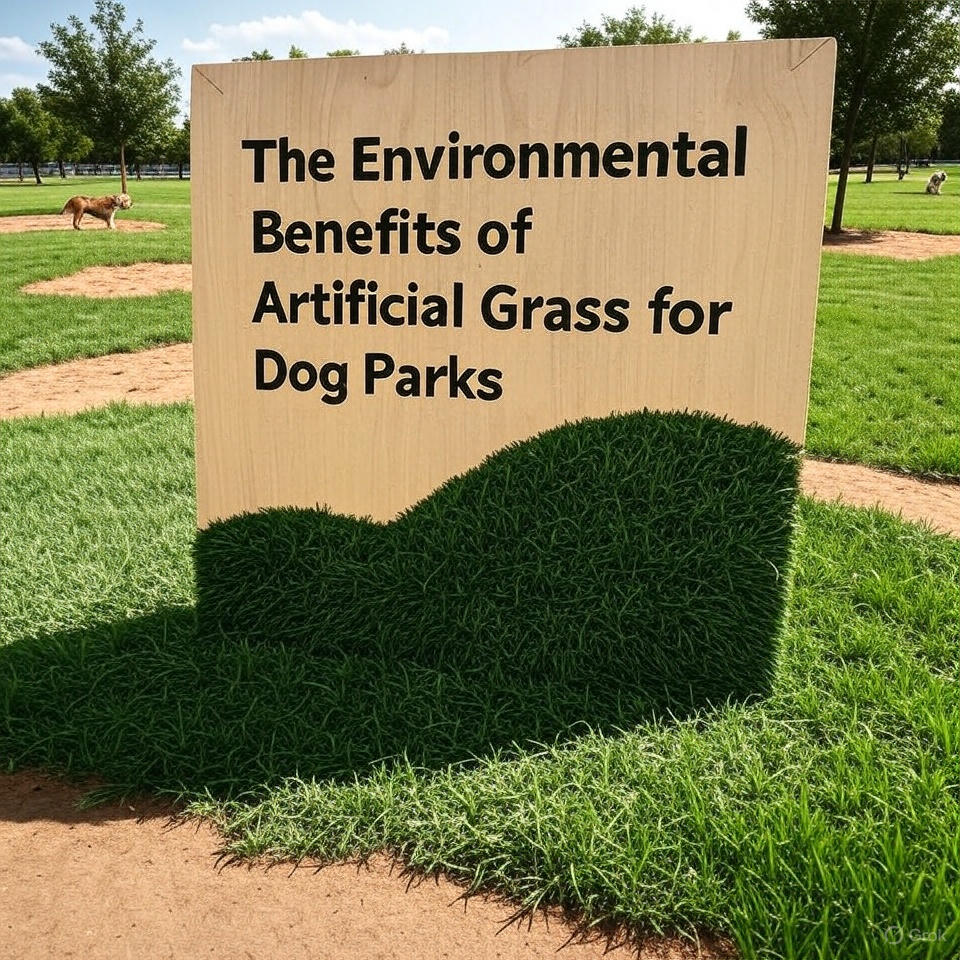In recent years, the demand for dog parks has skyrocketed, reflecting the growing number of pet owners in urban areas. As more cities invest in public spaces for dogs to exercise and socialize, there’s a rising interest in finding sustainable materials for these areas. One such solution is the use of artificial grass in dog parks. While synthetic turf has long been used in sports fields, its environmental benefits in dog parks are often overlooked.
Artificial grass for dog parks offers a unique combination of aesthetic appeal and environmental friendliness. It not only provides a durable surface for dogs to play on but also contributes to sustainability in several ways.
Environmental Benefits of Artificial Grass for Dog Parks
Water Conservation
One of the most significant environmental benefits of artificial grass dog parks is the substantial reduction in water usage. Traditional grass requires regular watering to stay lush and green, a process that consumes a considerable amount of water, especially in dry or drought-prone regions. For example, it’s estimated that maintaining an average lawn can use up to 1,000 gallons of water per month, a resource that many areas are now looking to conserve.
In contrast, dog parks with artificial grass require no watering at all. This not only helps conserve water but also reduces the strain on municipal water systems, which is especially critical during water shortages or drought conditions. By choosing artificial grass for dog parks, communities can drastically lower their water usage without sacrificing the quality of the park’s appearance or functionality.
Reduced Need for Chemical Fertilizers and Pesticides
Another key advantage of artificial grass for dog parks is the reduction in the use of chemical fertilizers and pesticides. Traditional grass lawns often require the application of these chemicals to keep the grass healthy and to prevent pests such as insects and fungi. Unfortunately, these chemicals can have harmful effects on the environment, contaminating soil and water sources, and posing risks to wildlife.
Artificial grass, on the other hand, eliminates the need for fertilizers and pesticides altogether. This not only reduces chemical runoff into local waterways but also creates a safer environment for pets and wildlife. For dog parks, this is especially important as the grass is safe for dogs to interact with, ensuring that the animals enjoy a healthy environment free from harmful chemicals.
Reduced Land Degradation
Another environmental challenge posed by natural grass in dog parks is land degradation. Dogs, especially large or active breeds, can quickly wear down natural grass, causing bare patches and muddy areas that require constant maintenance. The repeated foot traffic from both pets and people can lead to compacted soil, further harming the land’s ability to support healthy grass growth.
Artificial grass for dog parks provides a long-lasting, durable solution that resists wear and tear. Its synthetic fibers can withstand the pressure from dogs running, digging, and playing, keeping the surface intact and preventing soil erosion. As a result, dog parks with artificial grass maintain their aesthetic appeal and functionality, even with frequent use, without the need for constant soil replenishment or turf replacement.
Longevity and Durability
Artificial grass has a longer lifespan compared to natural grass, which is often subject to damage from extreme weather conditions, pests, and heavy use. With artificial grass, dog parks can benefit from a resilient surface that can last for years with minimal maintenance. This reduces the need for replanting or reseeding, both of which require additional resources and energy.
The durability of artificial grass also helps reduce the overall environmental impact of maintaining a dog park. Since artificial turf doesn’t require frequent replacement, the materials used in its installation contribute to long-term sustainability, making it a better option for both the environment and the community.
Sustainable Materials and Manufacturing
Many artificial grass products are now made with environmentally friendly materials and manufacturing processes. For example, some manufacturers use recycled materials in the production of synthetic grass, such as recycled plastic bottles or rubber. This reduces the need for virgin materials and helps divert waste from landfills.
In addition, some artificial grass products are designed to be 100% recyclable, meaning that at the end of their lifespan, the turf can be repurposed or recycled rather than ending up in a landfill. By choosing artificial grass made from sustainable materials, dog park operators can further reduce the environmental impact of their installations.
Reduced Carbon Footprint
The carbon footprint of maintaining a traditional lawn can be significant. Regular mowing, fertilizing, and watering require the use of energy, water, and chemicals, all of which contribute to a higher carbon footprint. On the other hand, artificial grass for dog parks significantly reduces these environmental costs.
Without the need for lawnmowers or irrigation systems, dog parks with artificial grass can help lower overall greenhouse gas emissions. The lack of maintenance equipment and chemical treatments also means fewer resources are consumed, leading to a reduced environmental footprint over time. For communities looking to become more eco-conscious, this can be a valuable step in their sustainability efforts.
Summing Up
Artificial grass for dog parks is more than just an aesthetic upgrade – it’s a sustainable solution with numerous environmental benefits. From water conservation to reducing the need for harmful chemicals and preventing land degradation, artificial grass helps communities create pet-friendly spaces that are kind to the planet.
As cities continue to seek eco-friendly alternatives for public spaces, artificial grass stands out as a practical and long-lasting choice. Not only does it save resources, but it also provides a safe, durable, and enjoyable environment for dogs and their owners. With its growing availability and the rise of sustainable manufacturing practices, artificial grass for dog parks is proving to be a smart investment for communities aiming to enhance both their environmental impact and their residents’ quality of life.






